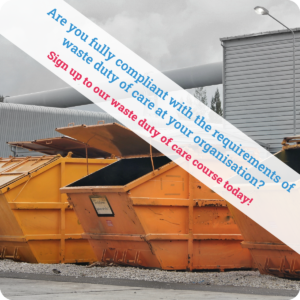Lone working is becoming more and more prevalent in everyday work. Despite this, an element of ‘out of sight and out mind’ continues to remain with respect to employer’s arrangements for managing the associated hazards and risk. This article sees The Compliance People Consultant, Mick Baah, look at the legalities and responsibilities for employers and employees with respect to lone working.
Lets start with the basics. Lone working is defined by Health and Safety Executive (HSE) as people who work by themselves without close or direct supervision. However, the scope of that definition doesn’t necessarily mean that the worker or individual is physically alone. They could be just purely in different location to the remainder of their team, manager or supervisor i.e. A warehouse operative carrying out a picking task or a maintenance engineer attending a break down to equipment or machinery on site). Considering the impact of the COVID-19 pandemic on the world of work and increase in employees home-working for example, or the increase in the number of delivery drivers on our roads, the widening scope of lone working becomes even more apparent.
A resounding yes is the answer. As we now know more about the scope of what lone working covers, activities involving lone working can be a crucial part of an organisation’s activities. Current health and safety legislation very much supports this. Again, to quote the HSE “It is often safe to work alone”.
The main focus of health and safety at work from employer responsibility is to ensure a duty of care is provided. There is no specific legislation stating that lone working should be managed, it is only implied by health and safety legislation. The Health and Safety at Work Act etc.1974 and The Management of Health and Safety at Work Regulations 1999 are the main drivers of this. Away from the criminal law standpoint, there is also a common law duty for this to be done. Employers have a duty to look after their employees with regards the working activities they are undertaking.
-
Risk assessment
A common misconception that definitely exists amongst some employers is that specific lone working risk assessments are mandatory. To be clear, employers should identify significant hazards which could cause injury or illness, evaluate how likely it is that these hazards could result in employees or others being harmed and ultimately take steps or action to eliminate or control this risk. Or in short, complete a risk assessment. Lone working should be such a consideration only if it is identified as a significant hazard in the workplace. How detailed this assessment will be depends very much on the activity or activities involved.
-
Safe system of work
There is a legal duty for employers to provide a safe system of work. A process, policy, and procedure for lone working arrangements fits this requirement. More importantly though, whatever arrangements are devised, ensure they are actioned and monitored. Communication with relevant people is key and look to obtain relevant feedback on effectiveness of those arrangements and how they can be improved.
-
Employee Awareness
Ensure your employees are aware of the scope of lone working in your business and what activities are involved. Where possible, provide examples of such activities that are carried out to allow for employees to be able to relate.
-
Supervision / Monitoring
Ensure supervision arrangements are in place for lone working activities. This may include the following considerations:
-
- being aware what activity is being carried out;
- who is doing it;
- location of the activity;
- duration of the activity;
- communication arrangements with lone worker; and
- are special measures involving monitoring required for employees?
-
Train
Ensure employees who are carrying out lone working activities are suitably trained and are aware of the relevant safety procedures.
Employees are required to look after themselves and others and not take unnecessary risks. This will assist their employer in meeting their health and safety legal requirements.
- Be aware of the scope of lone working. Make sure you have considered all relevant activities.
- Risk assessment for lone working is not mandatory but a suitable system of work is. A risk assessment will help you shape what that system can look like but more important is action and implementation.
- Make sure employees are aware of their requirements with regards lone working and the part they play.
If you need more help, why not get in touch with us? - Our professional team of consultants offer independent, periodic compliance evaluations for both environment and health & safety.
